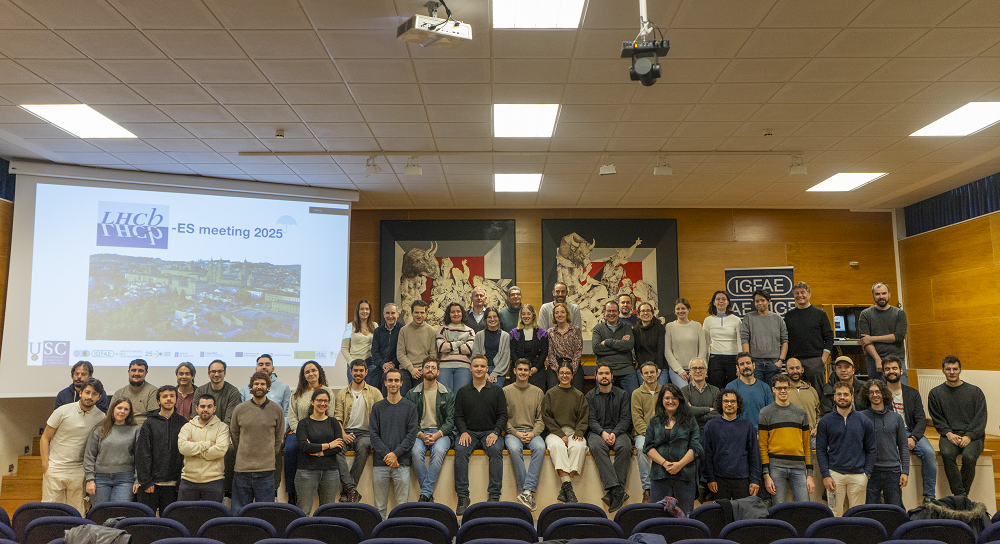More than 50 people participated on Thursday 9 and Friday 10 January 2025 in the annual meeting of the Spanish community working on the LHCb experiment at CERN. On this occasion, the IGFAE is the host of this meeting, held in Santiago de Compostela, where the main advances linked to this international collaboration are shared and discussed. Representatives from the University of Barcelona, Ramon Llull University, the Institute of Corpuscular Physics-IFIC (a joint center of the University of Valencia and CSIC), the University of A Coruña and the IGFAE will participate in the meeting.
During the two days, the participating groups have shared their main research objectives in the field of the LHCb experiment, which include the search for new physics and the verification of the predictions of the Standard Model of physics in different observables in the field of flavor physics. Ongoing research shared between the different subgroups present has also been addressed, and options for new work together have been discussed, always with the aim of achieving the best research performance of the Spanish community in the experiment.
About LHCb
The LHCb experiment investigates the asymmetry that exists in the universe between matter and antimatter by studying the b quark (beauty). It is composed of a series of subdetectors that analyze the collisions of particles launched by the Large Hadron Collider (LHC), located on the border between France and Switzerland, under the headquarters of CERN (European Organization for Nuclear Research). Nearly 1,700 people (scientists, engineers and technicians) from almost a hundred research centers in 25 countries are involved in this collaboration.
The IGFAE is one of the founding members of LHCb, and is currently the Spanish organization with the largest presence in this experiment. Since the beginning of the collaboration, the Institute’s staff has assumed tasks of high responsibility, taking charge of milestones such as the construction and installation of devices like the Silicon Tracker, the Vertex Locator (VELO), the analysis of the data collected by the detector and the next upgrade of the experiment (Upgrade II).
